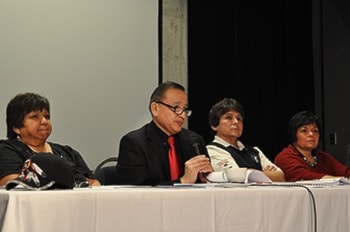Osoyoos British Columbia: The Okanagan Nation Alliance (ONA) has released a new report, deeming the National Park South Okanagan Lower Similkameen as feasible to move ahead to the next phase of negotiations. “It has taken eight years to ensure that the Okanagan Nation is in a position to be able to weigh in on what’s important to the Syilx people and how the future of the land and people should be protected. There is now sufficient confidence to carry forward to the next phase of discussion of a potential park,” said Grand Chief Stewart Phillip, Chair of the Okanagan Nation Alliance.
“The report, ‘Building a Syilx Vision for Protection’, was developed by the Syilx Parks Working Group, and came from our people upholding their responsibility to protect the land from encroachment by people who have a different view of utilizing the land and resources. Parks Canada has been more receptive to how the Park will be operated. There is now a growing relationship, and greater trust and respect,” stated Chief Edward of the Lower Similkameen Indian Band.
There still remain matters to be addressed through discussions. For example, the current Park plan is insufficient in size to promote the Syilx vision for protection of Syilx cultural and ecological integrity in the South Okanagan. Another outstanding issue is the role of British Columbia.
“The Okanagan Chiefs look forward to discussing with the Province of BC the findings of this report. One key interest in this area is protection of certain rights and values and a National Park reserve is one mechanism worth exploring through further negotiations” said the Grand Chief Phillip.
The next phase will provide additional information and seek clarity on how issues, such as Syilx inherent rights (harvesting, hunting), collaborative decision-making, and the inclusion of traditional ecological knowledge in park management and decision-making will be included in potential park management and decision-making models.
